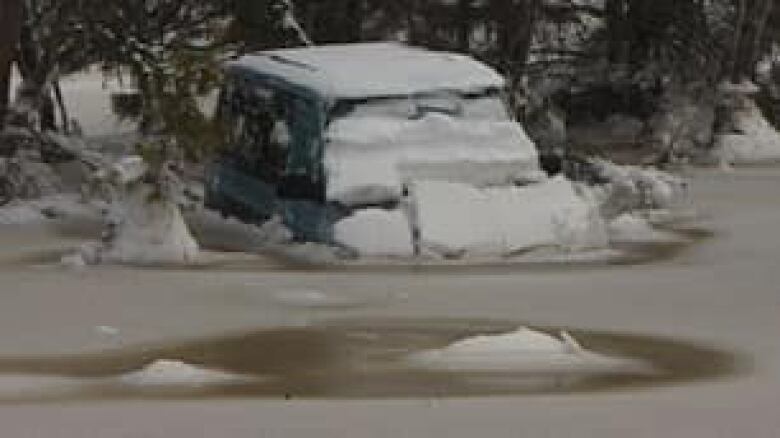Red River Valley already eyes spring floods
Flooding in Manitoba's Red River Valley has the potential to be devastating in2011, given the weather theprovince experienced in 2010.

Eric Sabourin, who lives near St. Jean Baptiste, 50 kilometres south of Winnipeg,is preparing for what has become almost an annual ritual using a motorboat to get from his home to dry land near the edge of his sprawling farm.
"For the past 10 years, we've never had this much snow this early," Sabourin said recently in a phone callfrom the farm. "We're kind of concerned."
Like thousands of others in the valley, Sabourin has to make adjustments when the river floods during very wet years and stretches into a lake that canbe more than 12 kilometres wide in places.
The coming year is already shaping up to be a doozy.
During the last bad flood, in 2009, Sabourin could not walk more than 10 metres from his front door without being submerged to his hips. He used a motorboat to get to his truck, which was parked on a high road farther away from the river, so that he could get groceries or visit nearby relatives.
He expects he'll be doing the same thing come April when the ice on the Red breaks up and melts and the river inevitably rises.
"Usually, it doesn't last too long. A couple of weeks we're used to it."
While it is impossible to predict this far in advance how bad flooding could be much depends on how fast the snow melts and whether ice jams will form there are already worrying signs. The ground was saturated by a wet summer and fall. That was quickly followed by a near-record amount of snow in November.
Add that to the river valley's water-retaining clay soil and the fact that the Red flows northward, which means rising meltwater from the south can run up against solid ice near the river's mouth north of Winnipeg.
Flood-fighting measures improve
The Manitoba and federal governments, along with local municipalities, have beefed up their flood-fighting measures in recent years. The province has purchased amphibious ice-breaking vehicles and added to its small army of backhoes that can smash ice from the shoreline.
Towns such as St. Jean Baptiste and Morris have improved their dikes. The Red River Floodway, a 47-kilometre-long ditch that diverts water around Winnipeg, has been expanded to protect the city from the flooding that experts sayhappens in the areaonce every 700 years.
Areas south of Winnipeg are perhaps the safest. After the so-called flood of the century in 1997, homes and businesses were raised or moved so theywon't flood unless the water is 60 centimetres higher than 1997 levels.
So even if the flood is as bad as 1997, most people are expected to remain dry surrounded by flooded farmland and with most roads, including the main highway between Winnipeg and the U.S. border, closed but dry.
"It becomes very much a flood of inconvenience," said Steve Topping, executive director of Manitoba's Water Stewardship Department. "Loss of access to communities can occur and those communities that are fully isolated, we often have to evacuate them because we cannot provide emergency services. But the infrastructure is all protected."
In 2009, St. Jean Baptiste, Morris and other towns closed off almost all the roads to the outside world as dikes were built up to keep the water at bay. But residents stayed put and each community was able to keep at least one road open.
Risk of ice jams north of Winnipeg
North of Winnipeg, the risk of ice jams presents an unpredictable danger. In 2009, ice jams caused sudden and severe flooding and sent large chunks of frozen water crashing into homes in the rural municipalities of St. Clements and St. Andrews.
Dozens of homeowners on the most flood-prone properties have since been bought out and are relocated but officials remain worried.
"We've moved (residents) out and torn down the homes but there are still several hundred other homes," said St. Andrews Reeve Don Forfar.
"We know that we have to do some diking. We know that we have to raise some homes, but there's no way we can do that between now and March."












_(720p).jpg)


 OFFICIAL HD MUSIC VIDEO.jpg)
.jpg)



























































































